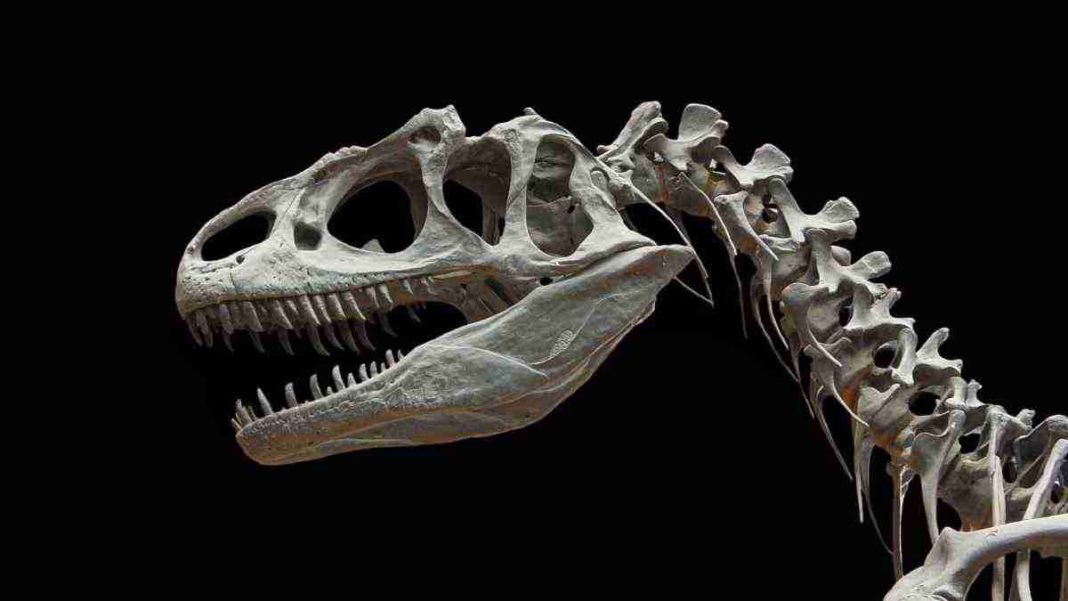INDIA: In a remarkable archaeological find, palaeontologists in eastern Spain have uncovered the partial skeleton of a previously unknown dinosaur species, offering a deeper understanding of a highly successful group of meat-eating dinosaurs. The bipedal dinosaur, named Protathlitis cinctorrensis, roamed the Earth approximately 126 to 127 million years ago during the Cretaceous Period.
Measuring an impressive 33 to 36 feet (10 to 11 meters) in length and weighing about 2 tons, Protathlitis was a formidable predator with an elongated, crocodile-like skull. Its curved and serrated teeth were specially designed for ripping through the flesh of its prey. This discovery adds to the growing body of evidence that these dinosaurs possessed unique adaptations for hunting.
The fossils were unearthed in the town of Cinctorres, located in the Spanish province of Castellon. Researchers identified a partial skeleton, including the right upper jawbone, one tooth, and five vertebrae. This finding provides valuable insights into the anatomy and characteristics of Protathlitis.
The significance of this discovery lies in Protathlitis’ classification within the spinosaur group. Spinosaurs were a highly successful lineage of meat-eating dinosaurs that existed during the Cretaceous Period. The group included renowned species such as Spinosaurus, one of the largest known meat-eating dinosaurs in history.
Protathlitis is closely related to another spinosaur called Baryonyx, which was discovered in England in the 1980s. Both dinosaurs exhibited elongated skulls compared to other carnivorous dinosaurs. While Baryonyx possessed a large claw on its first finger, no limb remains of Protathlitis have been found thus far.
Unlike some spinosaurs that are believed to have led a semi-aquatic lifestyle and primarily hunted fish, Protathlitis likely pursued prey on land near coastal zones. It is thought to have occasionally ventured into the water to hunt fish, distinguishing its hunting habits from its counterparts.
Dr. Andres Santos-Cubedo, a palaeontologist from Universitat Jaume I in Spain and the lead author of the research, stated, “Protathlitis probably hunted on land near coastal zones and only occasionally hunted fish.” This finding challenges previous assumptions and further contributes to our understanding of the diverse feeding strategies of spinosaurs.
The discovery of Protathlitis in Spain also sheds light on the evolutionary history and distribution of spinosaurs. During the early Cretaceous, two lineages of spinosaurs thrived in different regions. The Baryonyx relatives, including Protathlitis, were dominant in Europe, while the Spinosaurus relatives were more abundant in Africa.
The fossils found in Cinctorres are a crucial piece of the puzzle in unravelling the early history of spinosaurs. Scientists are still working to comprehend how these dinosaurs spread across continents and diversified throughout their existence. The newly discovered Protathlitis reinforces the notion that spinosaurs from the Baryonyx and Spinosaurus lineages occupied Western Europe before migrating to Africa and Asia.
This extraordinary find not only expands our knowledge of the spinosaur group but also provides valuable insights into the diverse ecosystems and dynamics of the Cretaceous Period. As scientists continue to analyze the fossils, they hope to glean further information about the life and behaviour of these fascinating ancient creatures.
With each new discovery, the evolutionary puzzle of dinosaurs becomes clearer, enabling us to paint a more detailed picture of the remarkable world that existed millions of years ago.
Also Read: “Eggciting” Discovery in India: Scientists Reveal the Intimate Details about Lives of Dinosaurs



